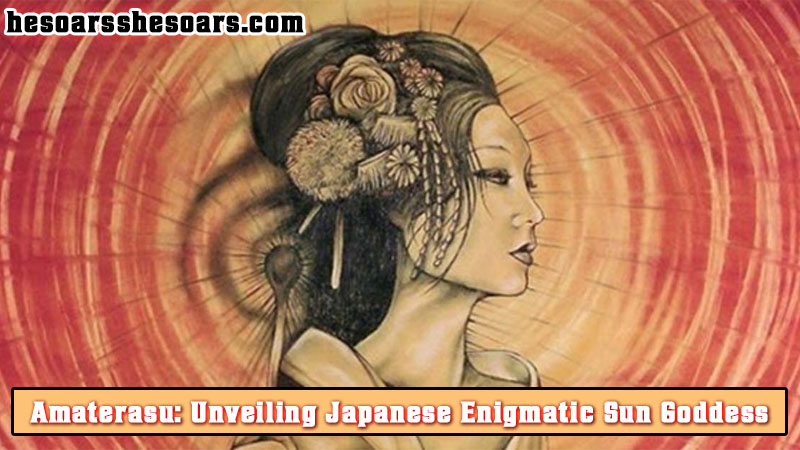Introduction
The land of the rising sun, Japan, is steeped in mythology and tradition that has shaped its culture and identity for centuries. Central to this rich tapestry of folklore is Amaterasu, the enigmatic sun goddess, whose tales have illuminated the spiritual landscape of Japan. This article will delve into the mythology of Amaterasu, exploring her origins, narratives. And her enduring influence on Japanese culture and beyond.
Origins and Mythical Narratives
Amaterasu, also known as Amaterasu-Ōmikami, is the goddess of the sun and the universe in Shinto religion. In fact, he was considered the highest deity in the heavenly hierarchy and was believed to be the direct ancestor of the Japanese imperial family. Her name, Amaterasu, translates to shining in heaven, epitomizing her divine status and radiant presence.
According to ancient texts like the “Kojiki” and the “Nihon Shoki”, Amaterasu was born from the left eye of the primordial deity Izanagi, during his purification ritual after escaping the underworld. She was bestowed with the celestial plain of Takamagahara to rule. Embodying the sun and the universe’s divine order.
The Tale of the Heavenly Rock Cave
One of the most prominent tales involving Amaterasu is the story of the heavenly rock cave, illustrating themes of light, darkness, and renewal. The narrative begins with Amaterasu’s brother, Susanoo, the storm god, wreaking havoc in the celestial realms. Distraught by his actions, Amaterasu retreats into the heavenly rock cave, Amano-Iwato, plunging the world into darkness.
The myriad gods convened to lure Amaterasu out and restore light to the world. Ame-no-Uzume, the goddess of dawn and revelry, performed a divine dance, eliciting laughter and curiosity from Amaterasu. As she peeked out, a divine mirror and jewels captivated her reflection, drawing her out of the cave. The gods sealed the entrance, ensuring her light would grace the world again.
Symbolism and Importance
Amaterasu’s mythology is rich with symbolism, embodying themes of purity, renewal, and harmony. The heavenly rock cave story illustrates the cyclical nature of the sun, representing rebirth and the triumph of light over darkness. This tale also symbolizes the Shinto belief in harmony and balance, reinforcing the importance of unity and order in both the celestial and earthly realms.
The sacred objects used to lure Amaterasu out of the cave – the mirror, Yata no Kagami; the jewels. Yasakani no Magatama; and the sword, Kusanagi-no-Tsurugi – are considered the Imperial Regalia of Japan. They symbolize the Japanese imperial family’s divine lineage and their sacred duty to maintain harmony and prosperity in the land.
Cultural Impact and Legacy
Amaterasu’s influence extends beyond myth and permeates various aspects of Japanese culture. The Grand Shrine of Ise, dedicated to Amaterasu, is one of the most sacred Shinto shrines, attracting millions of pilgrims and visitors annually. The rituals and festivals conducted here, such as the Shikinen Sengu. Exemplify the enduring devotion to Amaterasu and her role in sustaining spiritual and cultural traditions.
In the realm of arts and popular media, Amaterasu has inspired a plethora of creative expressions. From classical Noh and Kabuki theater to contemporary anime and video games.
Moreover, Amaterasu’s mythology has shaped Japan’s national identity, symbolizing unity, resilience, and a deep connection to nature and spirituality. The rising sun emblem, reminiscent of Amaterasu’s radiant light, adorns the national flag, epitomizing hope and a brighter future.
Conclusion
Amaterasu, the enigmatic sun goddess, stands as a luminous beacon in Japan’s mythological heritage. Her tales of triumph and renewal have inspired generations, fostering a sense of unity and a reverence for nature and spirituality. As we continue to explore and reinterpret her mythology, Amaterasu’s light shines ever brighter. Unveiling the intricate tapestry of beliefs and traditions that define the land of the rising sun.




